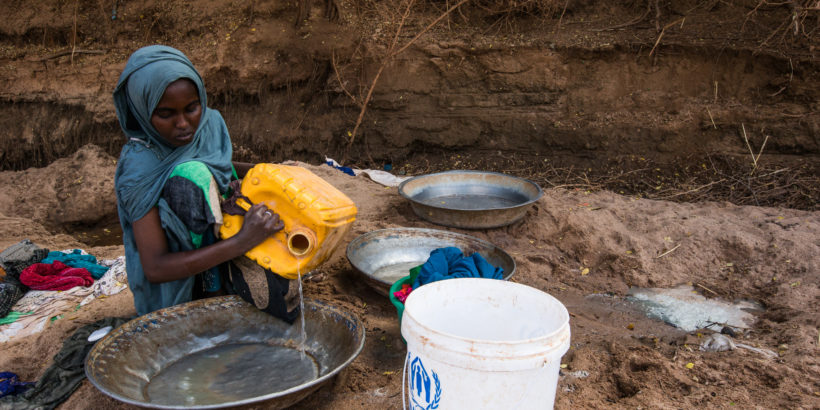From droughts to floods to severe weather events, the impacts of climate change on human health are steadily increasing. Take, for example, typhoid—a bacterial illness spread through fecal-contaminated food and water. Typhoid is most frequent in low- and middle- income countries where communities lack access to clean water, sanitation, and hygiene (WASH) services and infrastructure.
These same communities are often most vulnerable to the environmental consequences of climate change, including depletion of natural resources, urbanization, and habitat destruction. These trends, combined with more extreme weather events due to climate change, act as a multiplier, increasing the geographic range, seasonality, and intensity of transmission of many climate-sensitive infectious diseases, including typhoid.
Already, we see heavy rains and floods overwhelm water and sanitation systems, leading to contaminated water supplies and a greater number of people exposed to typhoid—as happened in Fiji last April following Severe Tropical Cyclone Harold. Similarly, recent droughts in places like Zimbabwe have forced people to resort to shallow water sources that are more likely to harbor harmful bacteria, including typhoid, thereby fueling disease outbreaks. These events continue to remind us that climate change and infectious disease are dual threats that we can no longer ignore.
On this year’s World Environment Day—which marks the formal launch of the UN Decade of Ecosystem Restoration 2021 – 2030—we applaud the global call to action to revive our damaged ecosystems in an effort to secure both the health of the planet as well as the health of all people. By cleaning up urban waterways, treating wastewater, and preventing contamination, we can help fight the climate crisis, enhance water supply security, and create a more balanced relationship between the ecosystems and the people that depend on them.
As governments and global partners consider ecosystem restoration and how to move towards the goals outlined in the Decade of Ecosystem Restoration, we must also advocate for proven health interventions that protect those most vulnerable to climate change-induced disease outbreaks. The improvement of WASH infrastructure, as well as increased access to WASH, alongside typhoid conjugate vaccines, offer a proven set of interventions that works to reduce typhoid burden. We must continue to educate decision-makers, national and sub-national leaders, and other health champions about the detrimental impact of climate change, and the importance of protecting vulnerable communities against increases in typhoid transmission.
It is also crucial that typhoid conjugate vaccines play a larger role in preventing the transmission of typhoid, particularly during extreme weather events. Government leaders must create policies and budgets to quickly procure and administer TCVs to protect impacted communities so that mechanisms are in place to quickly access vaccines when extreme weather event do occur.
We know that the burden of typhoid is only compounded by urbanization, depletion of natural resources, habitat destruction, and extreme weather events. We also know that we have a proven tool to protect communities against the ravages of typhoid. As we celebrate the UN efforts to prioritize ecosystem restoration, we must also champion the proven health interventions that protect communities against typhoid.
For more information on the relationship between typhoid and climate change and how you can join us in the fight to take on typhoid and the climate crisis, check out our latest fact sheet, Typhoid+ Climate Change.
Photo courtesy of Kabir Dhanji/USAID



